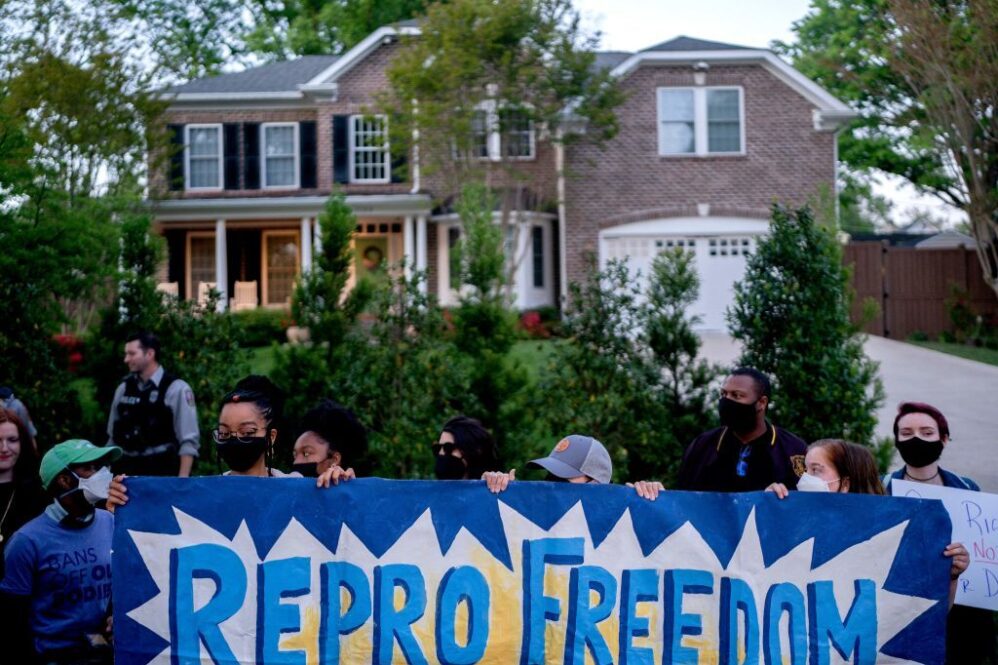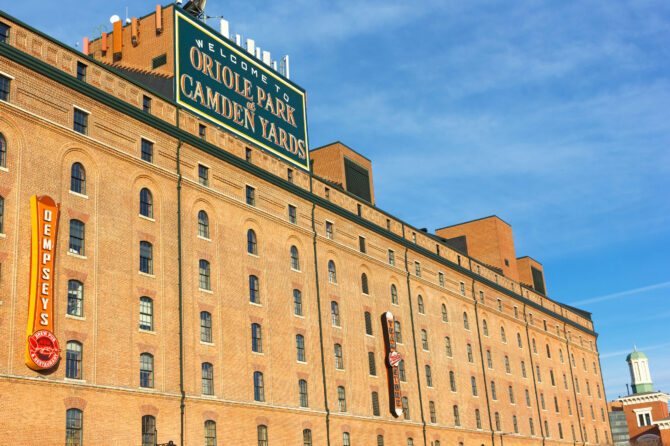Protesters outside the homes of U.S. Supreme Court Justices have been the focus of debate over when and where First Amendment rights can be exercised.
On Monday night, some 100 people gathered outside Associate Justice Samuel Alito’s home in the Alexandria section of Fairfax County, Virginia.
Abortion rights protesters chanted, “Abort the court!” and the rally lasted around 20 minutes amid heavy police presence, according to WTOP news partner NBC Washington.
Virginia Gov. Glenn Youngkin said that Virginia State Police and Fairfax County police, as well as federal authorities, would be assisting to “ensure there isn’t violence.”
Meanwhile, groups of protesters who are upset over the court’s leaked draft decision on abortion have been gathering outside the homes of Chief Justice John Roberts and Associate Justice Brett Kavanaugh in Montgomery County.
The protesters, who support abortion rights, have been chanting and marching on sidewalks outside the homes and holding up signs.
Lt. Peter Davidov, with the Montgomery County Police Department, said that county codeand Maryland law both have prohibitions about picketing a particular private residence, which does not mean you can’t protest in a residential neighborhood, “but you cannot picket at a particular residence.”
Davidov said protesters in residential areas can be in public spaces, “where you can be lawfully present without impeding people’s ability to go about freely.” That means protesters can be on sidewalks in residential neighborhoods, but they can’t block them.
“You can’t basically blockade the sidewalk; you have to keep moving. So you can walk back and forth,” Davidov said.
As of Monday afternoon, no citations or arrests had been made involving the protesters.
Earlier Monday, Michael Ricci, a spokesman for Maryland Gov. Larry Hogan, said in a statement, “The governor directed state law enforcement leaders to work with local and federal partners and be prepared to assist in the event there is a need for increased security and protective measures.”
Ricci said those measures included coordination between Maryland State Police, the state’s Coordination and Analysis Center, the U.S. Marshals Service, the Supreme Court Police and Montgomery and Prince George’s county police departments.
On Monday afternoon, White House press secretary Jen Psaki tweeted that the right to protest “should never include violence, threats or vandalism. Judges perform an incredibly important function in our society, and they must be able to do their jobs without concern for their public safety.”
On its webpage, the ACLU of Maryland advises that picketing in residential areas “can be considered disturbing the peace depending on the time of day and the volume.”
The ACLU also advises, “If a lawful order to disperse is given by police and you don’t comply, you may be arrested even if you are not doing anything else illegal.”
There also is a federal law that prohibits pickets or parades at any judge’s residence, with the intent of influencing a jurist. But it is unclear whether it’s being enforced. Read more articles like this at WTOP.









